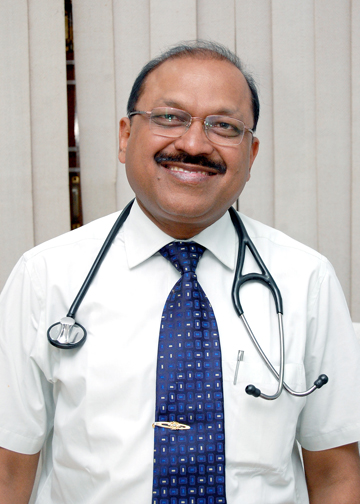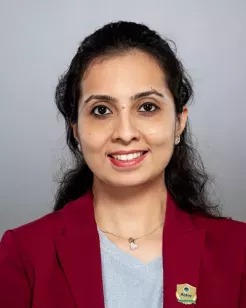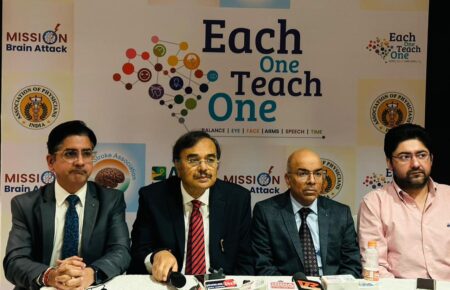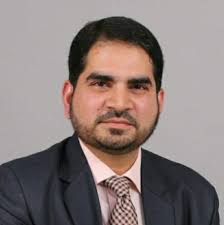Cold temperature clubbed with COVID risk elevates risk for cardiac ailments
Dr Bimal Chhajer, ex-consultant, AIIMS, New Delhi, and Director – SAAOL Heart centre. Heart attack is a cause of blockage of blood flow through the blood vessels due to plaque build up that breaks down

- Dr Bimal Chhajer, ex-consultant, AIIMS, New Delhi, and Director – SAAOL Heart centre.
Heart attack is a cause of blockage of blood flow through the blood vessels due to plaque build up that breaks down into clots. While the heart has to work harder to pump the blood throughout, excessive work on the heart muscle gives a heart attack or in severe cases can lead to heart failure as well.
Cardiac Ailments is one of the leading causes of death in India and worldwide killing about 1 in 5 men and 1 in 8 women, According to WHO reports. Heart attacks that were once reckoned to be an elderly problem has now been reflected in the middle aged population as well. The increasing stress of modern life has exposed even younger people to the risk of heart diseases.
While a person’s genetic disposition and family history remain the most common and uncontrollable risk factors, majority of heart diseases in the younger generation is due to excessive stress and long working hours coupled with erratic sleep patterns, which cause inflammation and increase the risk of heart disease. Smoking and a sedentary lifestyle further accelerate the risk symptoms in people in the age group of 20 to 30 years and ultimately heart failure.
Risk factors such as smoking and diabetes, in particular, provoke inflammatory changes and promote the formation of blood clots, thus obstructing the blood flow. The one factor that strongly predicts both heart and brain health is high blood pressure. Infact, many people are not even aware that they have high blood pressure because it has no visible symptoms, which is why it is called as ‘the silent killer’.
Symptoms of a heart attack
Though the symptoms of heart attack may vary from person to person, angina, commonly known as chest pain may be the most common symptom, accompanied by unusual breathlessness, palpitation, heaviness or tightness in the chest excruciating to shoulder, jaws and arms. The symptoms may vary from being mild to moderate to severe, depending upon individual and their genetics.
While the condition may happen to anybody irrespective of age and gender, certain signs and symptoms should never be ignored –
- Sudden pressure, tightness, or painful sensation in the chest that seems to spread to the jaw, neck and back upto the arms.
- Sudden or unusual shortness of breath
- Cold sweats even at normal room temperatures
- Sudden dizziness or light headedness.
- Sudden feeling of nausea and coughing
When it comes to heart attack, timing is everything and the chances of survival doubles with timely intervention. It is advised to everyone specially those at risk of a heart attack such as diabetics, high blood pressure, smokers, overweight, elderly and those with a family history of heart attack to always keep Sorbitrate and Aspirin tablets ready in car, home and office as heart’s First Aid. Self help may not always be good enough but is the simplest way to prevent damage to the heart in an impending heart attack hence you must seek medical help – call for help and try and reach a hospital.
Cardiac ailments being a lifestyle related ailment and hence the treatment should also be focused in the same direction. Present day Cardiologists are in the wrong track by emphasizing more use of Bypass surgery or Angioplasty, medicines, emergency treatments – but they are overlooking the real cause of heart attack and heart disease. If all of them work by removal of the cause of heart disease – namely diet, exercise, Yoga, stress Management – we can control the spread of heart disease as well as work towards Eradicating heart disease.
From the heart point of view they should keep the risk factors like Blood Pressure, Sugar at the best. They should avoid all kinds of non vegetarian food and cut down oil to cut down the lipids. Walking can be restricted at home and they should do Yoga and meditation for half an hour on daily basis. To boost up the immunity they should take extra dose of Anti Oxidants, Vitamin C , Haldi, Amla, Tulsi, eat plenty of vegetables, salads and fruits.
The eduVaccine revolves around the concept of ‘Reversal of heart diseases’ through regular monitoring of heart health through a ‘SAAOL Safety Circle’ which can guide every adult of the country to take steps to reverse and prevent heart disease. This technique has benefitted over 2 lakh heart patients in the past 24 years with non-invasive treatment modules like lifestyle change, US FDA approved EECP and a combination of Ayurveda, Homeopathy, Naturopathy, and Detoxification. With the development of the SAAOL Safety circle which is the best indicator of the heart health has benefitted many to prevent future heart complications. It has three circles and 12 factors to control, six parameters related to medical and four each related to healthy diet and lifestyle habits.
While a person’s genetic disposition and family history remain the most common and uncontrollable risk factors, majority of heart diseases in the younger generation is due to excessive stress and long working hours coupled with erratic sleep patterns, which cause inflammation and increase the risk of heart disease.
Angiography is an examination method to image the arteries of the body. With the use of dye, fluoroscopic camera and X-ray, the surgeons observe the blood flow through the arteries to check for blockages if any. Depending on the specific part of the body to be examined the angiography has different types and is used to detect various abnormalities like – aneurysm, blockage and narrowing of blood vessels, haemorrhage, inflammation, thrombosis or even a tumour.
Types of Angiogram
- Coronary angiogram – That is used to look at the arteries near the heart.
- Pulmonary Angiogram – To study the arteries in the lungs.
- Cerebral Angiogram – Arteries in the brain.
- Carotid Angiogram – Arteries of the head and neck.
- Peripheral Angiogram – arteries of the legs or arms.
- Aortogram – to inspect the aorta – the main artery in the body.
in India perform more than 2 lakh open heart surgeries and are increasing annually by 25% but they are not able to control the numbers of heart attacks. The surgeries done are only palliative.
This raises a big question mark on the use of unnecessary Angioplasties and Bypass surgeries in India and the 10,000 Heart Hospital Industry driven by the greedy Heart Surgeons and Interventional Cardiologists. In India more than 5 lac stents are being put every year and some 60,000 Bypass surgeries are being done in the heart Hospitals and 85% of them are done on stable heart patients – which can be easily avoided.
Educating the essentials about Heart disease and its risk factors is important to eradicate the casualties from the root. To prevent heart diseases from becoming an epidemic in India is to educate the masses about the essentials of a good heart health and regular screening.
The recent data suggests that over 1 crore globally have been infected till now out of which around 5 lac have lost their lives. India attributes to around 5.7 Lac infected persons with a mortality of around 16000. This in comparison to Coronary Artery DiseCardiac Hospitals ases (CAD) and other heart ailments is very low.
Globally over 20 crore people annually are being diagnosed with CAD and 2 crore have lost their lives, which accounts to 10% mortality rate. India alone accounts for 6 crore people having some form of heart disease with a mortality rate of 35 lac per annum. India is the present-day leader in the whole of the world so far as the number of heart patients is concerned and the number of heart patients are still on the rise. It is estimated that around 9000 per day lose their lives and the count is still increasing.
Evidently, the rate of mortality due to COVID is restricted to within 2% whereas heart diseases kill over 10%, and still neglected. There are 8-10 crore (80-100 million) heart patients in India and every 10 seconds one person dies of heart disease in this country.






